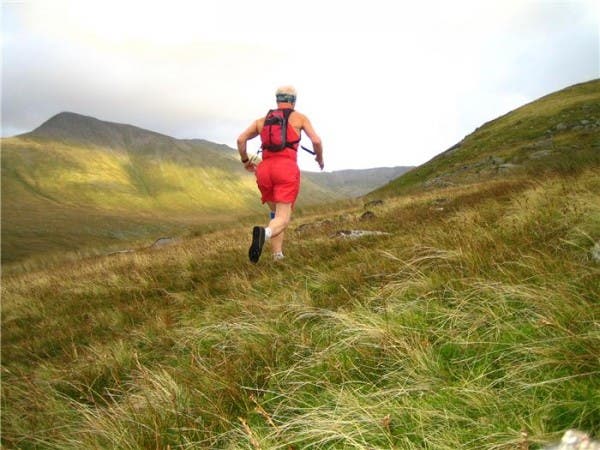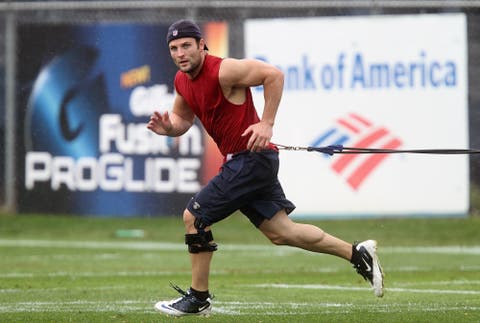If you are looking to improve your speed, your marks or looking for a new training plan, this is the right place. From training.com we always bet on articles that allow our fastest readers to know the best techniques on speed training. In this article you will find them, tested and praised by internationally renowned coaches and scientific studies that ensure the best results. In recent years, an attempt has been made to find the exact formula to achieve the perfect training plan and the conclusions are clear: in variety is excellence. We must train all aspects of our speed if we want to be a good runner, all these aspects are derived from one: power. This can be achieved with your own body and the only assistance of some elastic bands, you will not need more material or expensive infernal machines.
What is speed and how can we develop it?
Mel Siff (1) once said: “Speed is a function of leg speed and stride length, stride length is a function of leg length (anatomical length) and power.”
Power is the amount of force that can be applied to the ground. Increasing the power increases both factors: shorter time to reach maximum speed (greater acceleration) and higher top speed. So our goal is to increase speed by increasing peak power. An athlete with more power has greater acceleration, leading an athlete to reach top speed earlier. What are the current methods used to achieve this goal?
- Running on hills
- Speeding treadmill training
- Balance training
- Variable resistance training
- Plyometry
Running on hills
Jerry Rice became famous for running hills during the preseason in preparation. Appalachian State made its players run down the mountain behind the stadium. This way of training has been used to improve running, but does it work? And can it fit into a strength and fitness program?

Running downhill only (using the principle of speeding): “increased athlete’s maximum running speed by 6.5% when performed at a 5.8 ° incline compared to flat terrain.” The research also covers other slope angles ranging from two to seven degrees (2). The use of both up and down resulted in: “increase in maximum running speed by 3.4% accompanied by an increase in stride rate of 3.4%, although stride length has not changed ” (3). This means that the decrease in time was related to increased leg speed, not stride length. Stride length is influenced by power. So it works for the overall goal, which is to decrease sprint time, but not increase stride length. Still, it serves as a preparation. It helps your legs get faster and faster, which is great for developing a cardiovascular base, but not for anything else. Therefore, it must be placed on the day of preparation.
Speeding treadmill training
It has been a very expensive method used by some strength professionals to reduce sprint time (4). Studies found that using a treadmill to improve sprint time was successful. However, the way the improvements were achieved were the same as before. Increased stride frequency, and as a result, sprint time decreased. However, the stride length did not increase. It should be avoided as a method of training athletes for three reasons: Mainly, it does not work, it is expensive to buy specialized treadmills, and athletes who are in the process of gaining weight cannot be trained.
Band training
In the same study, band resistance running decreased sprint time by increasing stride length and decreasing vertical pelvic displacement. Increasing stride length is the goal and decreasing vertical pelvic displacement is excellent. This means that more power and energy are spent in horizontal movements than in vertical movements, which means that less energy will be wasted vertically and more we can exert horizontally.

Balance training
Balance exercises allow athletes to focus on neural control and forces them to recruit more motor units to stabilize their center of gravity compared to bodyweight squats (5). The increase in recruited motor units simulates more weight neurologically, but it is not as demanding as a lift, although it does not suppose the same fatigue as one or three maximum repetitions. Balance exercises force the body to use other muscle groups to stabilize the joints on an unstable surface. This greatly helps the athlete, because you can never run on both legs. Also, when changing direction while running, the joint is not stable. Balance exercises are an excellent tool to use in a week offloading or with an upper body injury that prevents spinal loading.
Variable resistance training
Another study found that peak power is improved with elastic band training, and suggested that the higher the tension used, the higher peak power athletes could achieve (6). Rea, Kenn, and Dermody (7) showed that varying the resistance provided by the band during this training can increase the rate of force development and allows athletes to train in the concentric phase as long as the relationship between length and tension is optimal. What does this all mean? The rate of force development increases, allowing the athlete to “fire” their muscles faster. It also means that more power is produced when using band squats, leading to increased lower body power, which ultimately leads to increased stride length. A substantial enough amount of this type of training can accomplish this goal.
Plyometry
Horizontal plyometrics have been shown to aid sprint performance, and weighted plyometrics do not benefit athletes more than weightless plyometrics. “The greatest improvement in sprint performance was achieved through a period of <10 weeks with a minimum of 15 sessions and high intensity programs with> 80 jumps per session” (8). For the strength coach, this means you don’t need to have your athletes wear weighted vests to perform the plyometrics. This will save your neurological systems effort for other useful exercises. It also gives you a rough idea of the recommended amount of training for athletes.

The plan for developing speed is as follows:
- Focus on improving the rate of force development (power) using bands or chains.
- Use horizontal plyometrics for less than 10 weeks and with a high intensity program with more than 80 jumps per session.
- Use balance training for a shock week or for athletes who can’t squat.
- Do band runs, it’s great during the plyometrics cycle.
- Use hill running for cardio work, it’s cheaper, and you can do it when you’re trying to gain weight.
References
- Siff M, Verkhoshansky Y (2009) Supertraining . 6th Edition. ISBN: 8890403802.
- Ebben W (2008) The Optimal Downhill Slope for Acute Overspeed Running. International Journal of Sports Physiology and Performance 3: 88–93.
- Paradisis G, Cooke C (2006) The Effect of Sprint Running Training on Sloping Surfaces. Journal of Strength and Condition Research 20 (4): 767–77.
- Myer G, Ford K, Brent J, Divine J, Hewett T (2007) Predictors of Sprint Start Speed: The Effect of Resistive Ground-Based vs. Inclined Treadmill Training Journal of Strength and Condition Research 21 (3): 831–36.
- Orstaglio R (2010) Personal Communications. July 2010.
- Anderson C, Sforzo G, Sigg J (2008) The Effect of Combined Elastic and Free Weight Resistance on Strength and Power in Athletes Journal of Strength and Condition Research 22 (2): 567–74.
- Rhea M, Kenn J, Dermody B (2009) Alterations in Speed of Squat Movement and the Use of Accommodating Resistance Among College Athletes Training for Power Journal of Strength and Condition Research 23 (9): 2645–50.
- Saez de Villarreal E, Requena B, Cronin J (2012) The Effects of Plyometric Training on Sprint Performance: A Meta-Analysis Journal of Strength and Condition Research 26 (2): 575–84.
Written By: John Hughes for EliteFTS
Translated by: Arturo Cantarero
